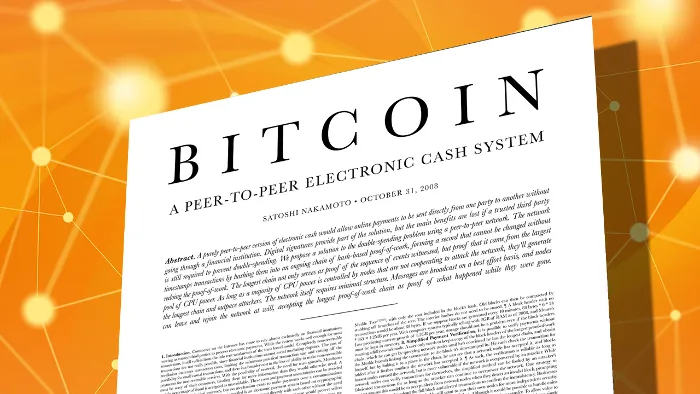Unveiling the Genesis: A Quick Dive into the Bitcoin Whitepaper

Introduction:
In the mysterious realm of cryptocurrencies, there exists a document that serves as the genesis, the very blueprint that gave birth to a financial revolution - the Bitcoin Whitepaper. Authored by the elusive Satoshi Nakamoto and released in 2008, this nine-page document outlines the principles and mechanics of the world's first decentralized cryptocurrency, Bitcoin. In this blog post, we embark on a journey to unravel the intricacies of the Bitcoin Whitepaper and understand the revolutionary ideas that have reshaped the landscape of finance.
The Birth of Bitcoin:
The whitepaper begins with the statement, "I. Introduction," where Nakamoto introduces the need for a peer-to-peer electronic cash system. He highlights the challenges of relying on trusted third parties and the double-spending problem that digital currencies faced. Nakamoto's solution was to create a system that relies on cryptographic proof instead of trust.
Decentralization: The Core Concept:
A central theme in the whitepaper is the concept of decentralization. Nakamoto proposes a network of nodes (computers) that collectively maintain a shared, public ledger called the blockchain. This decentralized ledger is the cornerstone of Bitcoin, eliminating the need for a central authority like banks or governments to validate transactions.
Proof-of-Work: Mining for Security:
To secure the network and prevent malicious actors from altering transaction history, Nakamoto introduces the concept of Proof-of-Work (PoW). Miners, individuals or entities who contribute computational power, compete to solve complex mathematical problems. The first to solve it gets the right to add a new block to the blockchain and is rewarded with newly minted bitcoins.
Supply Limit and Halving:
The whitepaper specifies that there will only ever be 21 million bitcoins in existence, creating a deflationary aspect to the currency. This scarcity is intended to prevent inflation and mimic the scarcity of precious metals like gold. Additionally, Nakamoto implemented a process called "halving," where the reward for miners is reduced by half approximately every four years, further controlling the supply and ensuring a gradual release of new bitcoins.
Transactions and Script:
Nakamoto explains how transactions work in the Bitcoin network, detailing inputs, outputs, and signatures. The use of a scripting language allows for complex conditions to be set for spending bitcoins, enabling the creation of smart contracts. This feature expands Bitcoin's utility beyond a simple currency, paving the way for innovative applications.
Challenges and Future Considerations:
As we reflect on the brilliance of the Bitcoin Whitepaper, it's essential to acknowledge the challenges and criticisms the cryptocurrency has faced over the years. Scalability issues, environmental concerns due to energy-intensive mining, and regulatory uncertainties pose significant hurdles. Yet, the resilience of the Bitcoin network and its community continues to drive advancements and solutions.
Conclusion:
The Bitcoin Whitepaper is more than a technical document; it's a revolutionary manifesto that has challenged the traditional financial system. Satoshi Nakamoto's vision has sparked a global movement, inspiring not only the creation of thousands of cryptocurrencies but also pushing the boundaries of what is possible in the world of finance and technology. As we continue to witness the evolution of blockchain and cryptocurrencies, it all traces back to the foundational principles laid out in those nine pages - the Bitcoin Whitepaper.
Want to read it for yourself? Link to the whitepaper is here (copy & paste): chrome-extension://efaidnbmnnnibpcajpcglclefindmkaj/https://bitcoin.org/bitcoin.pdf
